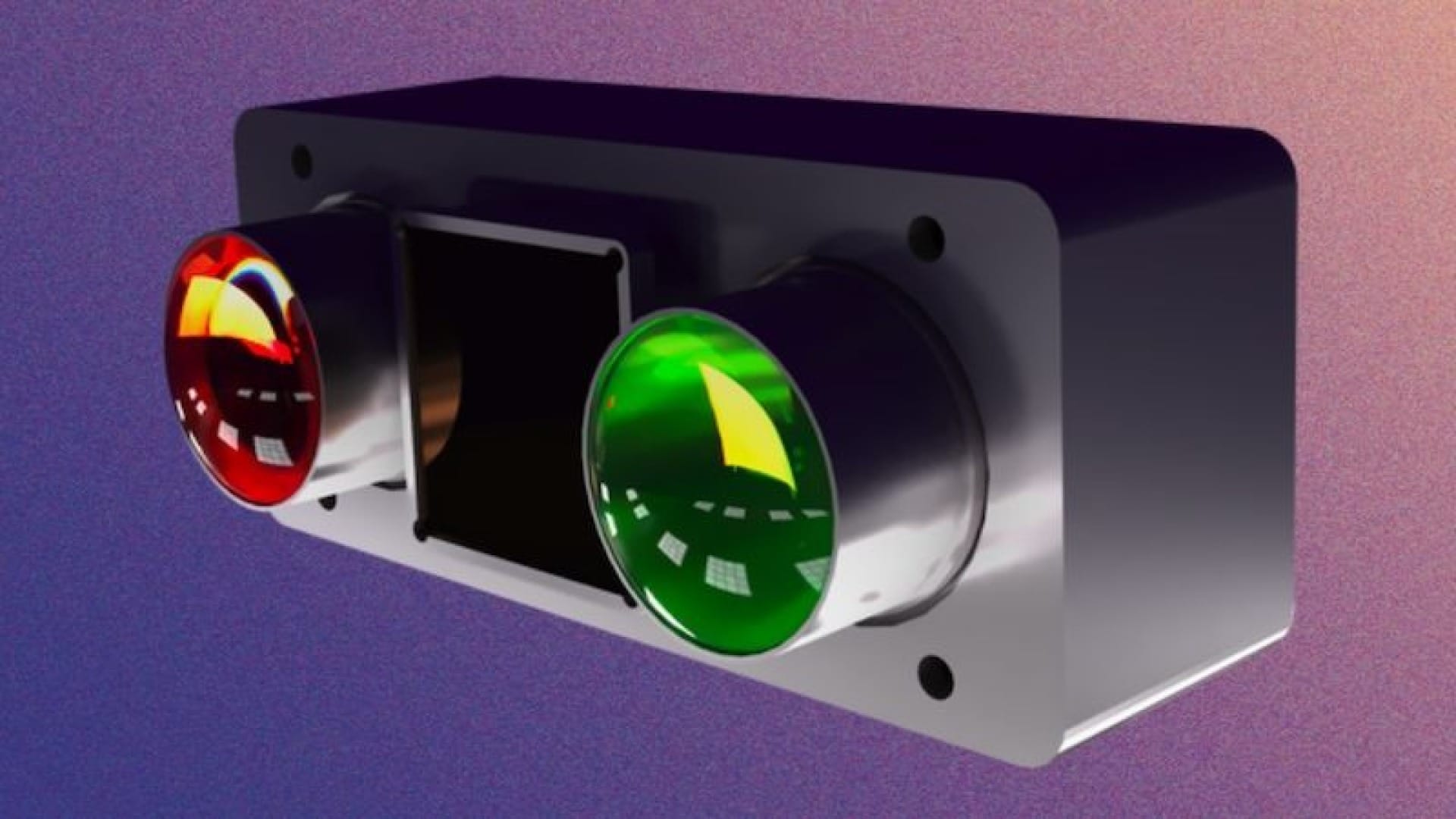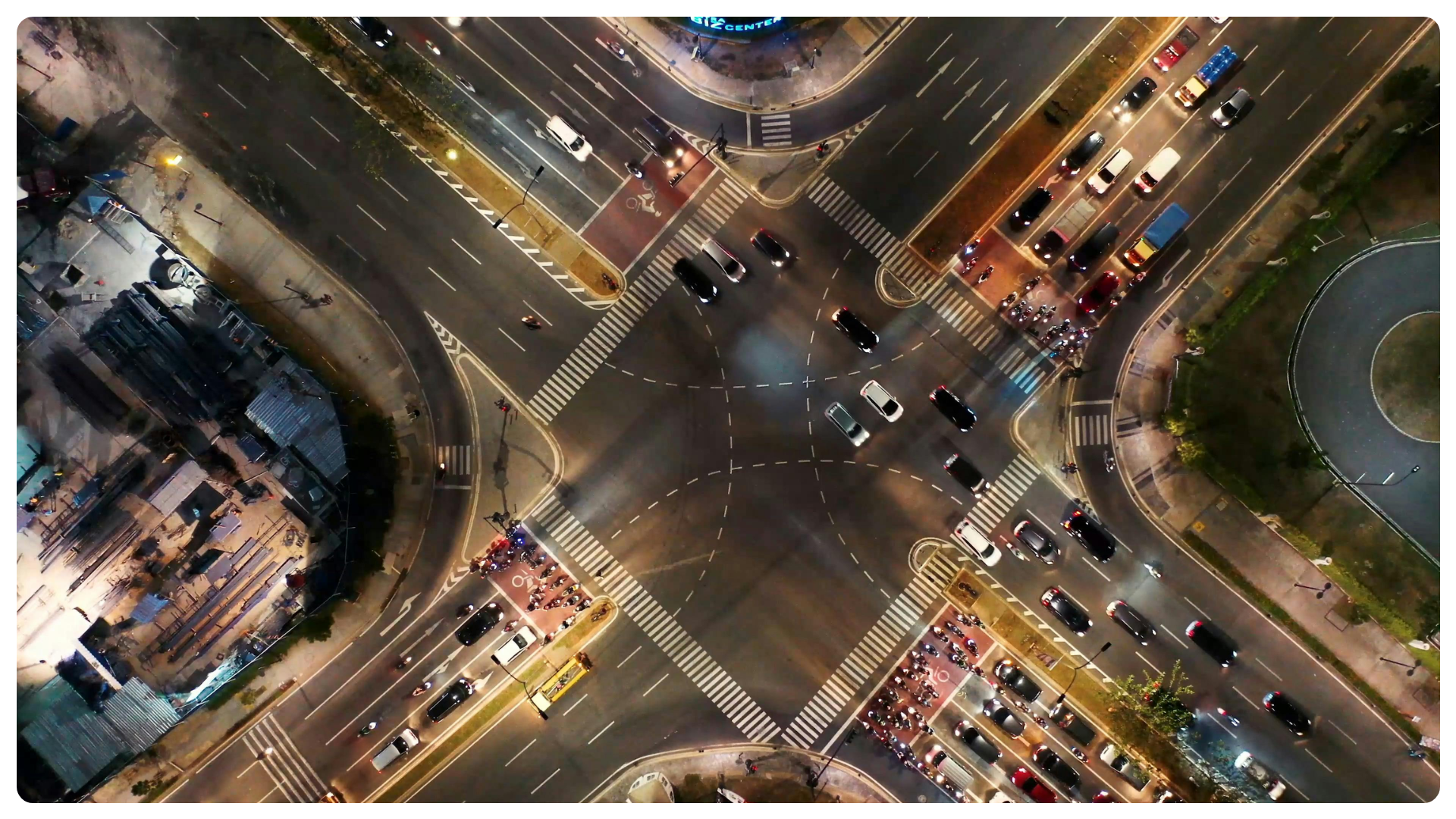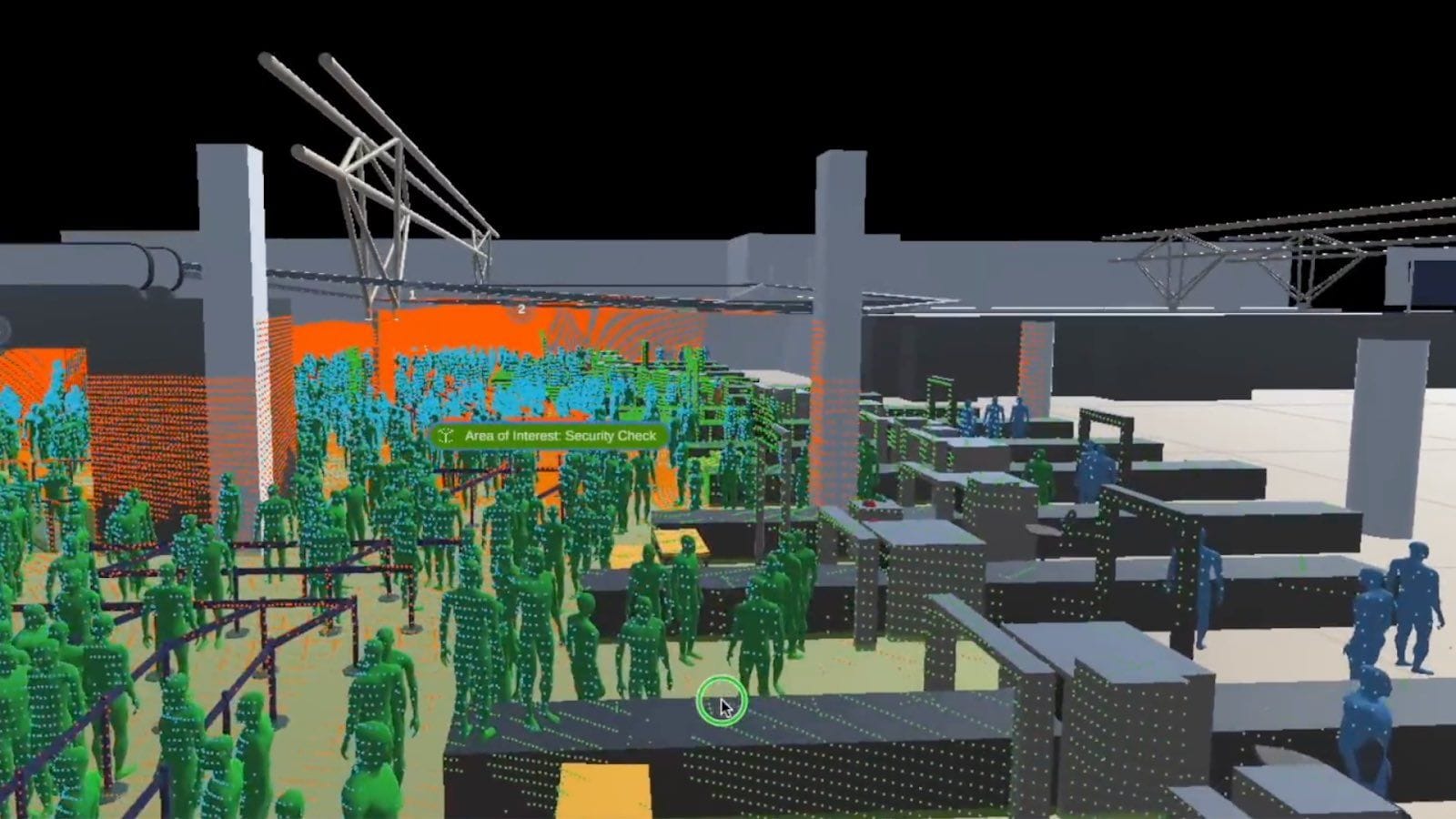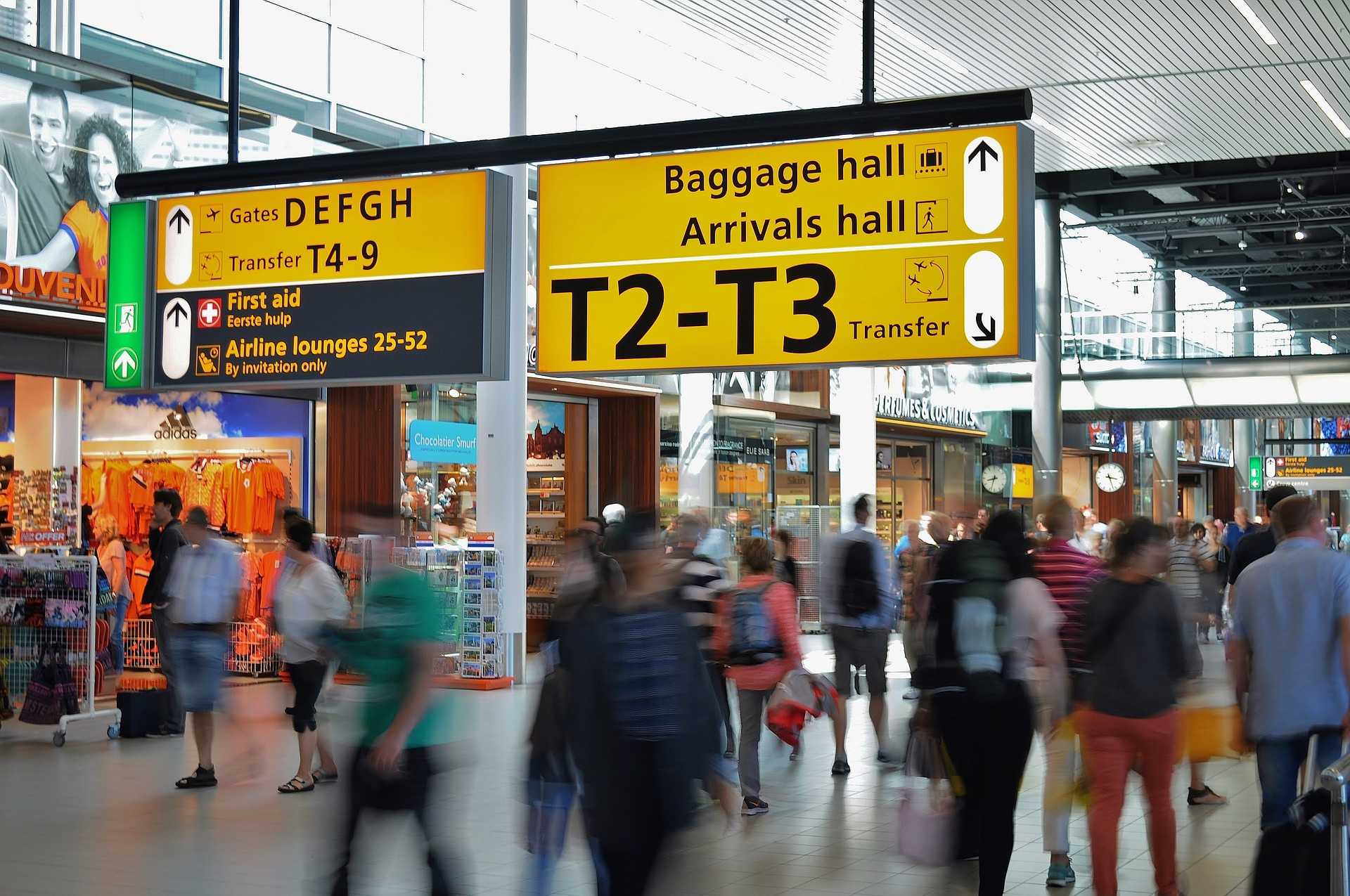
Enhancing Airport Arrival Efficiency: Physical AI and LiDAR Solutions for Flow Management
Physical AI and LiDAR technology transform airport arrival operations by enabling real-time passenger flow analysis and proactive resource management.
Table of Contents
- Introduction
- Understanding Passenger Flow Challenges
- Physical AI and LiDAR Technology Fundamentals
- Real-Time Data Collection and Analysis
- Forecasting Capabilities for Proactive Management
- Optimizing Immigration Processing
- Improving Baggage Wait Times
- Enhancing Airport Service Quality (ASQ) Scores
- Implementation Strategies and Best Practices
- Conclusion
Introduction
Modern airports function as complex ecosystems where thousands of passengers, staff, and vehicles interact daily within confined spaces. The arrival experience particularly represents a critical touchpoint that shapes passenger satisfaction and operational efficiency. From deplaning to baggage claim and immigration processing, each step in the arrival journey presents unique challenges for airport operators seeking to deliver seamless experiences.
Traditional monitoring systems like cameras and manual counting have significant limitations in accuracy, coverage, and privacy compliance. These older methods often fail to provide the comprehensive, real-time insights needed for truly responsive airport management. Additionally, they struggle to generate reliable forecasting data that would allow operations teams to anticipate and prepare for changing conditions.

As passenger volumes continue to grow globally and customer expectations rise, airports face mounting pressure to optimize their arrival operations while maintaining security standards. This article explores how the integration of Physical AI and LiDAR technology offers a powerful solution to these challenges, providing the tools needed to transform airport arrival experiences through data-driven decision making.
Understanding Passenger Flow Challenges
Airport arrival operations represent one of the most complex choreographies in transportation management. Multiple streams of passengers simultaneously navigate through various checkpoints, creating intricate flow patterns that change throughout the day. These patterns are influenced by numerous variables including flight schedules, aircraft types, passenger demographics, and seasonal factors.
One of the primary challenges airports face is the unpredictable nature of passenger arrivals. Even with known flight schedules, actual arrival patterns can vary significantly due to flight delays, weather conditions, or unexpected events. This unpredictability creates bottlenecks at critical processing points like immigration counters and baggage claim areas, leading to passenger frustration and operational inefficiencies.
Traditional monitoring methods further complicate the situation. Manual counting is labor-intensive and prone to human error. Video analytics systems struggle with accuracy in crowded environments and raise privacy concerns. Bluetooth and Wi-Fi tracking depend on passenger device settings and provide incomplete coverage. These limitations create significant blind spots in understanding the complete passenger journey.
The economic implications of these challenges are substantial. Inefficient passenger flow management leads to increased operational costs through suboptimal resource allocation. Staff may be underutilized in some areas while others remain understaffed during peak periods. Additionally, passenger dissatisfaction with long wait times directly impacts non-aeronautical revenue, as frustrated travelers spend less time and money in retail and dining areas.

Security considerations add another layer of complexity. Crowded areas not only create passenger discomfort but also potentially increase security vulnerabilities. The ability to monitor and manage crowd density becomes a critical factor in maintaining both operational efficiency and a secure environment. Without accurate, real-time visibility into passenger movements, security teams lack the information needed to respond proactively to developing situations.
Physical AI and LiDAR Technology Fundamentals
Physical AI represents a revolutionary approach to understanding and interpreting physical spaces and the movement of objects and people within them. Unlike traditional artificial intelligence that focuses primarily on digital data, Physical AI specializes in processing and analyzing data from the physical world. When applied to airport environments, this technology creates a digital representation of real-world passenger movements and behaviors.
LiDAR (Light Detection and Ranging) serves as the foundational sensing technology that powers Physical AI applications in airports. LiDAR systems emit laser pulses that bounce off objects and return to the sensor, creating precise three-dimensional maps of spaces and the objects within them. Unlike cameras, LiDAR operates effectively in various lighting conditions and provides exceptional accuracy in measuring distances and detecting movement patterns.
The technical architecture of these systems typically involves strategically placed LiDAR sensors throughout arrival areas, from gates to immigration and baggage claim. These sensors feed data to edge computing devices that perform initial processing before transmitting refined information to central systems. Advanced algorithms then analyze this data to identify patterns, detect anomalies, and generate predictive models of passenger behavior.
A key advantage of LiDAR-based systems is their ability to function without capturing biometric or personal data. Unlike facial recognition cameras, LiDAR sensors detect only the presence and movement of objects in space, represented as point clouds rather than identifiable images. This anonymous tracking capability allows airports to gather comprehensive flow data while maintaining strict privacy standards and regulatory compliance.
The spatial resolution provided by LiDAR systems enables granular analysis that was previously impossible. Airports can measure queue lengths with centimeter-level accuracy, track wait times down to the second, and analyze flow rates across different areas simultaneously. This level of detail supports micro-adjustments to operations that collectively produce significant improvements in overall efficiency.

Real-Time Data Collection and Analysis
The implementation of LiDAR and Physical AI creates an unprecedented capability for airports to collect and analyze passenger flow data in real time. Unlike traditional systems that often provide insights hours or days after events occur, these advanced solutions deliver actionable intelligence within seconds, enabling truly responsive management of arrival operations.
Modern LiDAR sensors deployed throughout airport arrival areas continuously capture spatial data at rates of up to 300,000 points per second. This high-frequency sampling ensures that even rapid changes in passenger density and movement are accurately recorded. The resulting point cloud data provides a comprehensive three-dimensional representation of the entire monitored space, capturing both macro flow patterns and micro-level interactions.
The sophistication of modern Physical AI algorithms allows for automatic classification of different types of movement patterns and behaviors. These systems can distinguish between passengers queuing for services, those moving through transit areas, and staff performing various functions. This classification capability enables highly specific analysis of different operational areas and functions, providing targeted insights rather than generalized occupancy data.
Data visualization plays a crucial role in making complex spatial information accessible to operational staff. Advanced dashboard interfaces present real-time heat maps showing passenger density, dynamic queue measurements, and processing time metrics across all arrival touchpoints. Color-coded alerts highlight areas exceeding predetermined thresholds, ensuring that potential problems receive immediate attention from the appropriate teams.
Integration with airport operational databases enhances the contextual relevance of flow data. By correlating passenger movements with flight information, staffing levels, and equipment status, these systems provide a comprehensive operational picture. This integrated view enables managers to understand not just what is happening but why it's happening and how different factors are influencing passenger flow throughout the arrival journey.

The temporal resolution of real-time monitoring allows airports to identify patterns that would otherwise remain invisible. Minute-by-minute analysis reveals how passenger behavior changes in response to various stimuli – from announcements and signage to staff interventions and environmental factors. This detailed understanding supports evidence-based refinement of both physical spaces and operational procedures to optimize the passenger experience.
Forecasting Capabilities for Proactive Management
Beyond real-time monitoring, the true transformative power of Physical AI and LiDAR technology lies in its predictive capabilities. Advanced forecasting models built on comprehensive historical data enable airports to anticipate passenger flow patterns hours, days, or even weeks in advance, fundamentally changing how resources are allocated and operations are planned.
These forecasting systems employ sophisticated machine learning algorithms that analyze historical passenger flow data alongside numerous variables including flight schedules, aircraft types, origin/destination information, and historical processing times. By identifying correlations and patterns within this multidimensional dataset, the models can predict future passenger volumes and flow rates with remarkable accuracy.
Short-term forecasting provides immediate operational value by predicting passenger volumes in 15-minute to 1-hour increments throughout the day. These predictions enable supervisors to make real-time adjustments to staffing and resource allocation, opening additional processing lanes before queues form rather than reacting after problems develop. This proactive approach prevents the cascading delays that often occur when initial bottlenecks disrupt the entire arrival process.
Medium-term forecasting supports daily and weekly planning cycles, allowing managers to optimize staff schedules and resource deployment plans. By accurately predicting busy periods and potential bottlenecks days in advance, airports can ensure appropriate staffing levels while giving employees more consistent and predictable work schedules. This balanced approach improves both operational efficiency and staff satisfaction.
Long-term predictive models inform strategic planning and infrastructure decisions by forecasting passenger flow patterns months or years ahead. These insights help airports identify capacity constraints, evaluate the potential impact of new routes or airlines, and plan terminal modifications or expansions. By understanding future demand patterns, airports can make targeted investments that deliver maximum operational benefits and passenger experience improvements.
The continuous learning capability of these AI systems progressively improves forecast accuracy over time. As the systems ingest more data and observe the outcomes of operational decisions, they refine their predictive models to account for previously unidentified patterns or variables. This evolutionary improvement ensures that forecasts become increasingly reliable as the system matures, providing ever-greater value to airport operations teams.

Optimizing Immigration Processing
Immigration processing represents one of the most challenging aspects of airport arrival operations, balancing the competing demands of security, efficiency, and passenger experience. Physical AI and LiDAR technology provide powerful tools for optimizing this critical function through enhanced visibility, accurate forecasting, and intelligent resource allocation.
Comprehensive monitoring of immigration halls using LiDAR sensors enables precise measurement of key performance indicators including queue lengths, wait times, and processing rates. These metrics can be tracked in real-time across different passenger categories such as citizens, residents, and visitors, providing a complete picture of immigration operations. The resulting data highlights efficiency variations between different counters, staff members, or processing methods.
Dynamic queue management represents a significant advancement enabled by these technologies. Rather than maintaining static queue configurations, immigration halls can adapt their layouts based on predicted passenger volumes and types. Physical barriers, digital signage, and staff positioning can be adjusted throughout the day to optimize passenger flow and processing efficiency, ensuring that available space is used effectively regardless of changing conditions.
Staff allocation becomes more precise through detailed analysis of processing patterns. By understanding the relationship between passenger types, document requirements, and processing times, immigration managers can create optimal staffing plans that match agent skills with anticipated demand. This might include deploying agents with specific language capabilities during arrivals from certain regions or allocating experienced staff during peak complexity periods.
Real-time monitoring enables immediate intervention when performance metrics deviate from expectations. Supervisors receive alerts when wait times exceed thresholds or when processing rates decline, allowing them to investigate and address issues before they significantly impact passenger experience. This might involve opening additional counters, redeploying staff, or addressing technical problems that are slowing the process.
The integration of forecasting data with immigration staffing systems supports more efficient personnel management. Staff schedules can be optimized weeks in advance based on predicted passenger volumes, while day-of adjustments ensure that resources match actual conditions. This balanced approach improves both operational efficiency and staff quality of life by creating more predictable work patterns while maintaining necessary flexibility.

Continuous improvement becomes possible through detailed performance analytics. By analyzing historical data on processing times, bottlenecks, and passenger feedback, immigration authorities can identify opportunities for procedural refinements, training improvements, or technology enhancements. This evidence-based approach to process optimization delivers incremental efficiency gains that collectively transform the immigration experience.
Improving Baggage Wait Times
Baggage claim represents a critical touchpoint in the arrival journey, often serving as passengers' final impression of the airport experience. Extended wait times at baggage carousels consistently rank among the top sources of passenger dissatisfaction in airport surveys. Physical AI and LiDAR technology offer powerful solutions for optimizing this process through improved monitoring, coordination, and passenger communication.
LiDAR sensors deployed throughout baggage claim areas provide comprehensive visibility into passenger congregation patterns, queue formation, and carousel utilization. These systems can accurately measure how many passengers are waiting for each flight's baggage, how they distribute themselves around carousels, and how long they typically wait before receiving their luggage. This detailed understanding enables targeted improvements to both physical layouts and operational procedures.
Predictive analytics enable baggage operations teams to anticipate demand patterns and allocate resources accordingly. By forecasting when passenger surges will reach baggage claim areas, handlers can ensure sufficient staff are available to unload aircraft and transport luggage precisely when needed. This just-in-time approach prevents both understaffing during peak periods and resource waste during quieter times.
Carousel allocation optimization becomes possible through detailed analysis of passenger flow patterns and baggage volumes. Rather than assigning carousels based solely on terminal location, airports can use predictive data to distribute flights across available facilities in ways that minimize congestion and maximize throughput. This might include separating flights with similar arrival times or allocating larger carousels to flights with more checked baggage.
Real-time monitoring enables immediate intervention when baggage delivery metrics fall outside acceptable parameters. Operations teams receive alerts when delivery times exceed thresholds or when passenger numbers at carousels grow beyond comfortable capacity. This early warning system allows for rapid response, such as deploying additional handlers or expediting priority baggage, before passenger satisfaction is significantly impacted.
Passenger communication improves dramatically with accurate real-time data. Digital signage can display precise information about baggage delivery status and expected wait times, reducing anxiety and allowing passengers to make informed decisions about their time. Some advanced systems even offer personalized notifications through airport apps, alerting passengers when their specific flight's baggage is about to arrive on the carousel.
Performance analytics provide the foundation for continuous improvement in baggage operations. By analyzing historical data on delivery times, handling efficiency, and passenger waiting patterns, airports can identify systemic bottlenecks and implement targeted solutions. These might include process refinements, equipment upgrades, or layout modifications that collectively transform the baggage claim experience over time.

Enhancing Airport Service Quality (ASQ) Scores
Airport Service Quality (ASQ) scores have become the global benchmark for measuring passenger satisfaction and comparing performance across airports worldwide. Within this framework, arrival experience metrics significantly influence overall ratings, with efficient processing and minimal wait times serving as key drivers of passenger satisfaction. Physical AI and LiDAR technology offer powerful tools for systematically improving these critical ASQ components.
Data-driven insights enable airports to identify specific factors that most strongly impact their ASQ scores. By correlating passenger satisfaction ratings with actual operational metrics like wait times, processing speeds, and congestion levels, airports can pinpoint the exact thresholds at which passenger perception shifts from positive to negative. This precise understanding allows for targeted improvements that deliver maximum impact on overall satisfaction scores.
Real-time performance monitoring against ASQ benchmarks enables immediate intervention when metrics fall below targets. Operations teams receive alerts when wait times or processing speeds approach thresholds known to negatively impact satisfaction scores, allowing for rapid response before passenger experience is significantly affected. This proactive approach prevents the service failures that disproportionately influence overall satisfaction ratings.
Competitive benchmarking becomes more meaningful with precise operational data. Rather than comparing generalized satisfaction scores, airports can analyze specific performance metrics against industry leaders, identifying exact areas where they lag competitors. This detailed comparison supports strategic improvement initiatives focused on closing specific performance gaps rather than implementing generalized enhancements.
Predictive analytics enable airports to anticipate potential ASQ impacts before they occur. By forecasting passenger volumes, processing demands, and potential bottlenecks, operations teams can implement preventive measures to maintain service quality during challenging periods. This might include deploying additional staff, modifying processes, or enhancing communication during predicted high-stress periods.
The comprehensive nature of LiDAR monitoring enables airports to discover previously unrecognized factors influencing passenger satisfaction. By analyzing movement patterns, dwell times, and interaction points throughout the arrival journey, airports often identify unexpected pain points or opportunities for enhancement that wouldn't be captured through traditional surveys or limited monitoring systems.

Continuous improvement cycles become more effective with detailed performance data. By implementing targeted changes, measuring their specific impact on relevant metrics, and refining approaches based on results, airports create a virtuous cycle of enhancement. This structured methodology transforms ASQ improvement from periodic initiatives to an ongoing process embedded in daily operations.
Implementation Strategies and Best Practices
Successfully implementing Physical AI and LiDAR solutions for airport arrival operations requires thoughtful planning, stakeholder alignment, and systematic execution. While the technology itself is powerful, realizing its full potential depends on how effectively it's integrated into existing operations and adopted by staff at all levels.
A phased implementation approach typically yields the best results, beginning with limited deployments in high-priority areas before expanding to full terminal coverage. This measured strategy allows airports to demonstrate value quickly, refine approaches based on initial learnings, and build organizational support before making larger investments. Immigration and baggage claim areas often serve as ideal starting points due to their significant impact on passenger satisfaction.
Integration with existing airport operational databases and systems is essential for maximizing value. By connecting passenger flow data with flight information systems, resource management platforms, and performance dashboards, airports create a comprehensive operational picture that supports coordinated decision-making. This systems integration transforms isolated data streams into actionable intelligence that benefits all stakeholders.
Staff training and change management represent critical success factors often overlooked in technology implementations. Frontline supervisors and operations teams need not only technical training on new systems but also guidance on how to interpret data and translate insights into operational decisions. This capability building ensures that the technology's potential is fully realized through improved human decision-making rather than remaining an underutilized technical tool.
Establishing clear performance metrics and targets provides the foundation for measuring success and driving continuous improvement. These metrics should align with both operational objectives (processing times, resource utilization) and passenger experience goals (satisfaction scores, wait time perceptions). Regular review of these metrics against targets ensures that the implementation remains focused on delivering meaningful outcomes rather than simply generating data.
Privacy and data governance frameworks must be established early in the implementation process. While LiDAR technology is inherently privacy-friendly due to its anonymous nature, airports should still develop clear policies regarding data collection, storage, usage, and sharing. Transparent communication about these practices builds trust with passengers, staff, and regulatory authorities.
Partnerships with technology providers experienced in airport environments significantly enhance implementation success. Companies like Outsight bring specialized expertise in deploying Physical AI and LiDAR solutions in complex transportation settings, accelerating time-to-value and reducing implementation risks. Their industry knowledge and best practices help airports avoid common pitfalls and achieve optimal results more quickly.

Conclusion
The transformation of airport arrival operations through Physical AI and LiDAR technology represents a significant leap forward in how airports understand and manage passenger flow. By providing unprecedented visibility into movement patterns, enabling accurate forecasting, and supporting proactive resource allocation, these technologies address the fundamental challenges that have historically limited operational excellence in arrival processes.
The operational benefits extend across multiple dimensions of airport performance. Immigration processing becomes more efficient through optimized staffing and queue management. Baggage delivery synchronizes more effectively with passenger arrivals. Resource allocation becomes more precise through accurate forecasting. Each of these improvements contributes to enhanced ASQ scores and more satisfied passengers, while simultaneously reducing operational costs through optimized resource utilization.
For airport leaders considering these technologies, the path forward is clear. Begin with a focused assessment of current arrival operation challenges and prioritize areas where improved passenger flow insight would deliver the greatest value. Engage cross-functional stakeholders early to ensure alignment around objectives and expected outcomes. Consider starting with limited deployments that demonstrate value quickly before expanding to comprehensive coverage.
As passenger volumes continue to grow and customer expectations rise, the airports that thrive will be those that embrace data-driven approaches to operational excellence. Physical AI and LiDAR technology provide the foundation for this transformation, enabling a level of visibility, forecasting accuracy, and proactive management that was previously impossible. The result is not just more efficient operations but fundamentally better passenger experiences that differentiate leading airports in an increasingly competitive global market.
LiDAR INSIGHTER Newsletter
Join the newsletter to receive the latest updates in your inbox.






